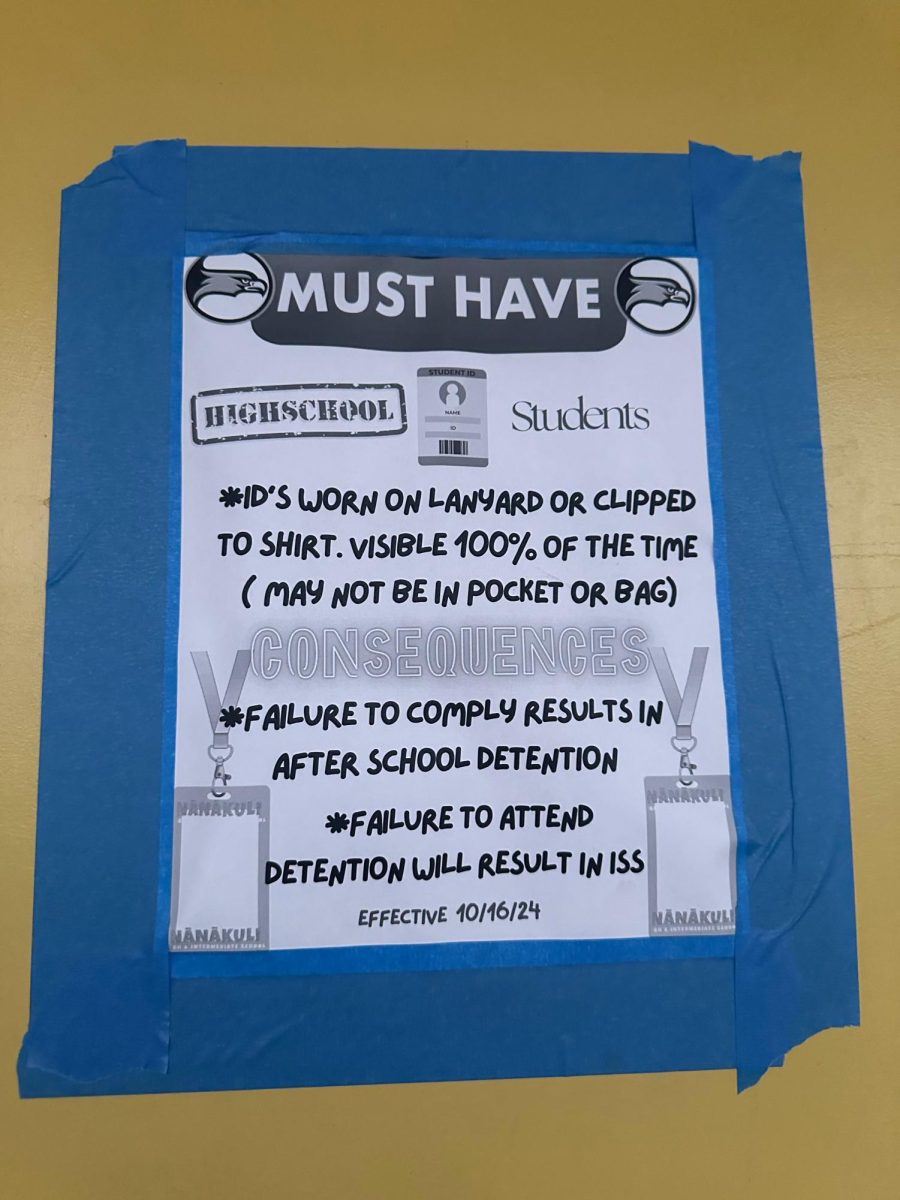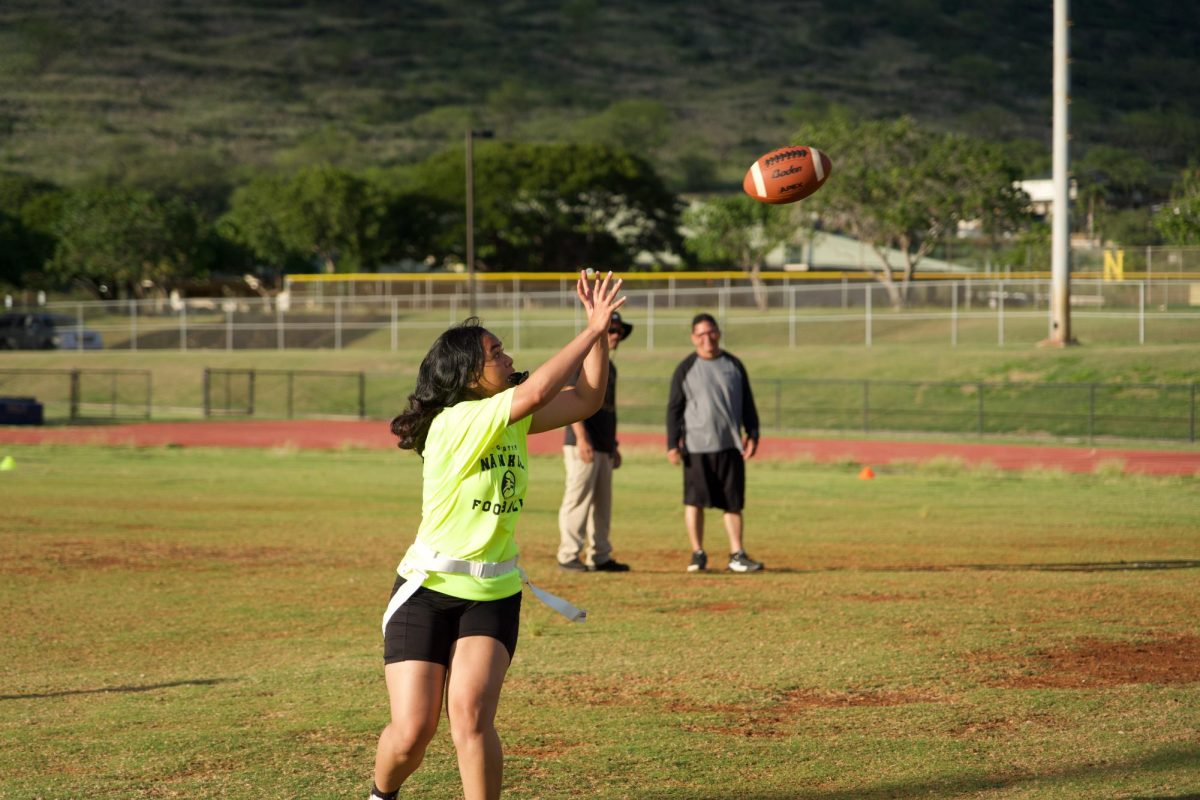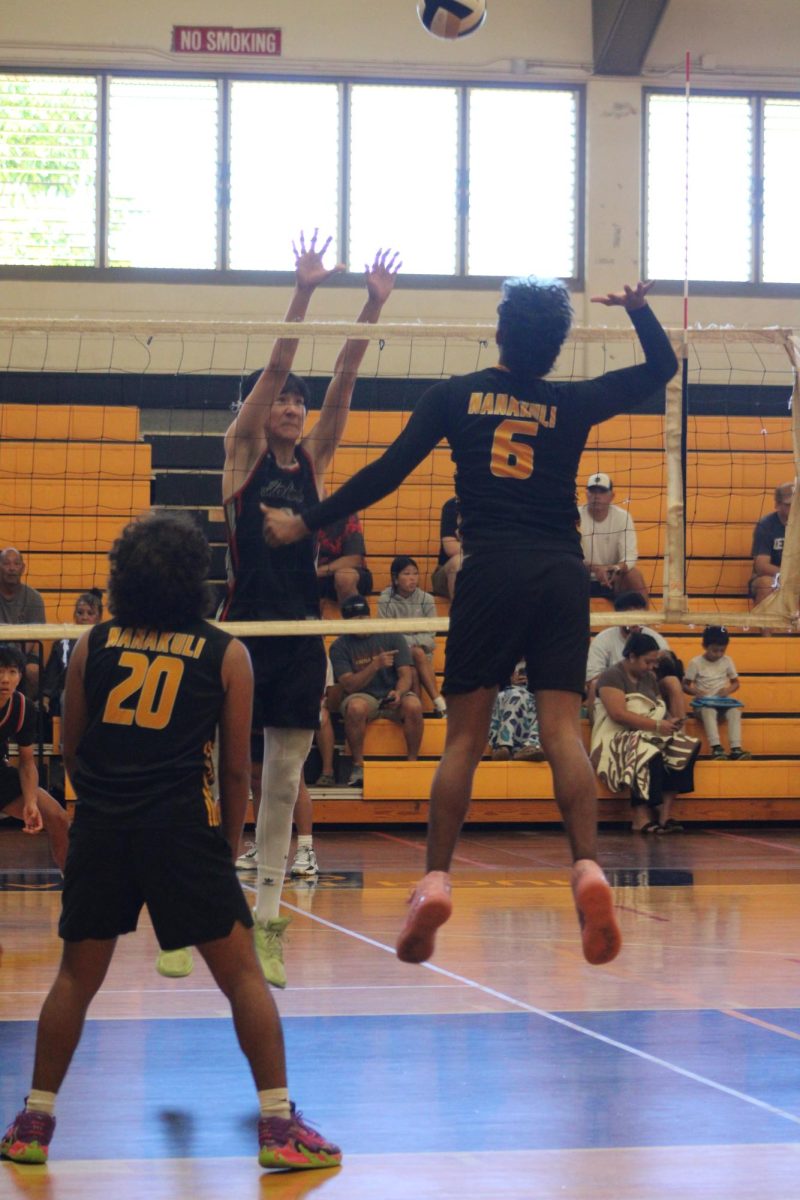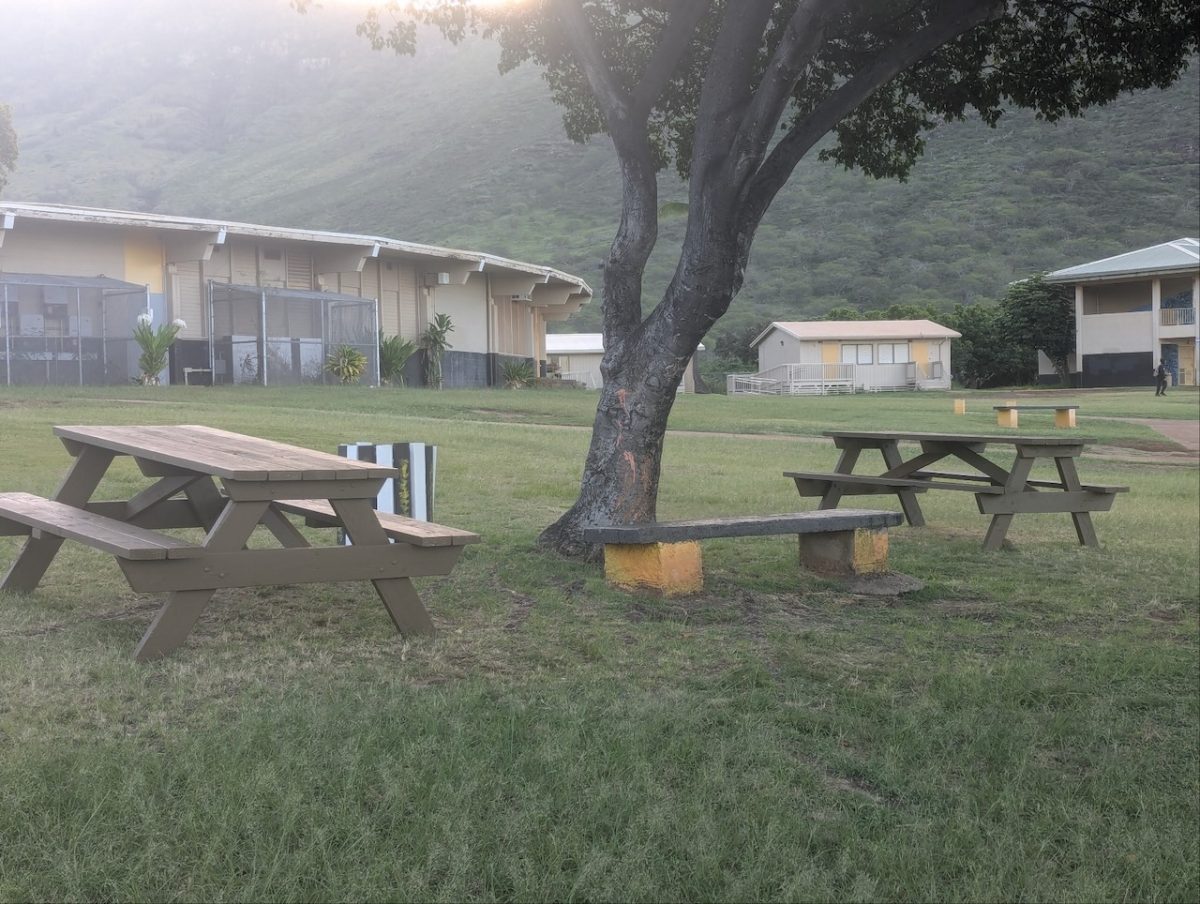Nānākuli High and Intermediate School (NHIS) has implemented new consequences for students not wearing IDs during the school day. Students without IDs will be given detention and if those students don’t go to detention, they will be given in-school suspension.
According to NHIS School Leadership, IDs are important for the safety of the students, staff, and the entire school. They ensure that only students from the school are on campus, identify students within the classes and on campus, and differentiate between high school and middle school students. High school students are required to have their IDs visible at all times, while middle school students must wear their uniforms and have their IDs visible at all times.
“The ID policy has been a policy that we have had for many years. It’s just that only now, we’re really trying to crack down on people wearing them, and so it’s not something that’s new,” said Middle School Art Teacher Patricia Ohashi.
Despite the perspective that the ID rule and the consequences are new rules, they are not. The 2014-2015 Student and ʻOhana Handbook said, “Student IDs are mandatory for all students (7-12) and must be worn with the lanyard around your neck or clipped to students’ clothing . . . Because the identification of all individuals on campus is a safety issue, students who do not have a student ID and who refuse to purchase another will face disciplinary action as aligned with Chapter 19.”
Since the new consequences have been implemented, some teachers have seen an increase in students wearing their IDs. “More students are wearing it. When they see teachers and school leaders, they put it on appropriately,” said Middle School Social Studies Teacher Kamuela Werner.
One challenge that teachers have been facing is the confusion of the enforcement of the ID policy. “I have a lot of questions from a teacher’s perspective, such as, what are our new responsibilities in terms of carrying out this new policy? And why were those not communicated to us ahead of changing the policy itself?” said Japanese Teacher Kele Roberts.
Another challenge for teachers has been the communication of the policy. “I don’t like how it was just dropped on the teachers. Nobody had given us any heads up and so we’re the ones that are dealing with the irate students,” said High School Social Studies Teacher Todd Sibley.
After-school detention will be held in separate places for middle school and high school students. Middle school detention will be held in the middle school dining area. As of this article’s writing, the high school’s location is still being decided upon.
The first day of detention will be Monday, October 21, 2024, from 1:30 p.m. to 2:15 p.m. According to NHIS School Leadership, students could engage in reflective activities or other activities to help them understand and/or change behavior during detention.
As for students, some feel that wearing their ID in their pocket or having it attached to their backpack should count as having their IDs on due to safety reasons. “What happens if people just yank it off our necks? Or with the clips, what if people steal it?” said Freshman Lola Ahue.
Various students have suggested some form of positive reinforcement for wearing their IDs on lanyards. NHIS Student Government is looking at pins representing the various school organizations a student is part of.
“The idea is that your lanyard could have pins if you are on the football or other sports teams. Have a pin if you are part of Robotics, Agriculture, Band, etc.; this way, students can show their pride in what they are participating in,” said Student Activities Coordinator Robin Kitsu.
If students did not get their first ID this school year, they can go to the front office to get one. According to the Student Handbook, any replacement ID will cost the student $5.
As the school continues to enforce the ID rule, the goal is to ensure a safer, more positive school environment.














